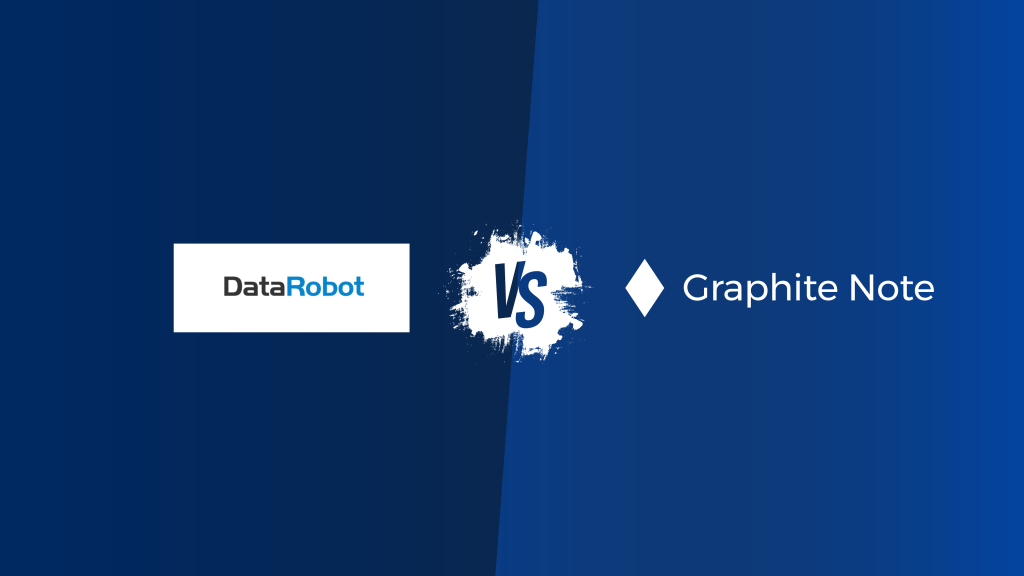Predictive campaign analytics empowers your business to make data-driven decisions, optimize marketing efforts, and deliver personalized experiences that resonate with your target audience. Take your marketing to new heights and achieve unprecedented success, with predictive campaign analytics.
Understanding Predictive Campaign Analytics
Using predictive campaign analytics, marketers can now anticipate customer behavior and optimize their efforts. Predictive analytics tools analyze large volumes of historical data. They uncover patterns and trends that can inform your marketing decisions. Using statistical algorithms, businesses gain valuable insights into customer preferences. This enables more effective marketing campaigns and improved overall performance. Predictive analytics involves using historical data, statistical algorithms, and machine learning techniques to make predictions about future events or behaviors. When applied to marketing campaigns, predictive analytics enables your business to anticipate your customer needs, identify trends, and optimize your marketing strategies.
Defining Predictive Analytics
Predictive analytics helps your business make sense of the vast amounts of data you collect. Analyzing historical data patterns, predictive analytics can forecast future outcomes and trends with remarkable accuracy. Predictive analytics enables your business to uncover hidden patterns and correlations, giving you the power to make informed decisions and stay one step ahead of your competition. Predictive marketing analytics goes beyond traditional descriptive and diagnostic analytics. Predictive marketing analytics uses advanced techniques to forecast future outcomes with remarkable accuracy. Machine learning algorithms process customer data to create sophisticated predictive models. These models help your marketing teams identify high-potential leads and personalize messaging. Predictive analytics can also help you understand customer lifetime value, enabling you to allocate resources more efficiently.
For example, let’s consider a clothing retailer. Through analyzing past sales data, predictive analytics can identify which products are likely to be popular in the upcoming season. This information can then be used to inform inventory planning and ensure that the right products are available in the right quantities, maximizing sales and minimizing stockouts.
The Role of Predictive Analytics in Campaigns
The use cases for predictive analytics in marketing are diverse and expanding. From content recommendations to inventory management, its applications are vast. Your business can predict which products your customers are likely to purchase next. This enables targeted cross-selling and upselling opportunities for increased revenue. Predictive campaign analytics can help your business:
- Enhance Customer Segmentation: Predictive modeling enhances customer segmentation, allowing for targeted marketing campaigns. Marketers can tailor their approaches based on individual customer profiles. This leads to higher conversion rates and increased customer satisfaction. Artificial intelligence plays a key role in processing vast amounts of data, while identifying subtle patterns that humans might overlook in complex datasets.
- Optimize Your Marketing Channels: Social media data provides valuable insights into customer preferences and behaviors. Integrating this information with other data sources enhances predictive capabilities. Marketing channels can be optimized based on predicted customer engagement. This ensures that your marketing messages reach the right audience at the right time. Mobile app usage data further refines predictive models for personalized experiences.
- Anticipate trends: Predictive analytics tools help marketers anticipate trends and adapt strategies accordingly. Through analyzing historical data, you can identify seasonal patterns and market shifts. This enables proactive planning and resource allocation for maximum impact.
- Monitor And Refine Your Campaigns: Marketing performance can be continuously monitored and improved using predictive analytics.
- Understand Customer Behavior:Third-party data can enrich existing customer profiles for more accurate predictions. This comprehensive approach provides a holistic view of customer behavior patterns. Marketers can identify potential churn risks and implement retention strategies. Predictive analytics also helps optimize pricing strategies based on demand forecasts.
- Identify Your Target Audience: Predictive analytics plays an important role in identifying and targeting the right audience. Through analyzing customer behavior, preferences, and past purchase patterns, your business can create personalized campaigns that resonate with your target market.
- Optimize Your Campaigns: Predictive analytics also helps optimize campaign performance by determining the best channels, timing, and messages for maximum impact. When analyzing historical campaign data and customer response rates, you can identify which channels and messages have been most effective in the past. This information can then be used to fine-tune future campaigns and allocate resources more efficiently. For example, a travel agency can use predictive analytics to determine the optimal time to send promotional emails to different customer segments. Through analyzing past email open rates and click-through rates, the agency identifies the time of day and day of the week when customers are most likely to engage with their emails. This enables the agency to schedule their campaigns for maximum effect and increase the chances of conversion.
- Predict Customer Churn: Predictive analytics can also help your business identify potential churn across your customer base. Analyzing customer behavior and engagement metrics, predictive models can flag customers who are at risk of leaving and prompt you to take proactive measures to retain them. This could involve targeted offers, personalized recommendations, or improved customer service.
The Science Behind Predictive Analytics
Behind predictive analytics lies advanced data collection and analysis techniques. Let’s explore two key components that drive predictive analytics:
Predictive analytics relies heavily on high-quality data. Your business must ensure it collects relevant and comprehensive data from multiple sources, including customer interactions, purchase history, and demographic information. This data collection process involves various methods, including surveys, online tracking, and data mining.
Once collected, the data undergoes rigorous analysis, leveraging statistical models and algorithms to identify patterns, correlations, and trends. Data analysts use various tools and techniques, such as regression analysis, decision trees, and clustering algorithms, to uncover valuable insights hidden within the data.
Data preprocessing techniques are applied to clean and transform the raw data into a suitable format for analysis. This involves removing outliers, handling missing values, and normalizing variables to ensure accurate and reliable results.
The analysis is the foundation upon which accurate predictions are made. When you understand the relationships between different variables and their influence on the outcome, you can make informed decisions and develop effective strategies.
Machine Learning and AI in Predictive Analytics
Machine learning algorithms and artificial intelligence (AI) play a pivotal role in predictive analytics. Machine learning algorithms automatically adjust and improve their predictions over time, enabling your business to continuously refine campaign strategies and achieve better results. Machine learning algorithms can handle large volumes of data and identify complex patterns that may not be apparent to human analysts.
There are various types of machine learning algorithms used in predictive analytics. Supervised learning algorithms learn from labeled data, where the outcome is known, and use this knowledge to predict future outcomes. Unsupervised learning algorithms discover patterns and relationships in unlabeled data, helping you uncover hidden insights and segment your customer base.
Artificial intelligence, particularly in the form of neural networks, has also revolutionized predictive analytics. Neural networks mimic the structure and function of the human brain, enabling them to process complex data and make highly accurate predictions. Neural networks can recognize intricate patterns, adapt to changing conditions, and handle non-linear relationships between variables.
Predictive analytics combines advanced data collection and analysis techniques with machine learning and AI to make accurate predictions. Using these technologies, your business can gain valuable insights, optimize their decision-making processes, and stay ahead of the competition.
Benefits of Predictive Campaign Analytics
Let’s explore some of the key advantages associated with predictive campaign analytics:
Improved Decision Making
Using predictive analytics, you can gain valuable insights into customer behavior and preferences. These insights empower you towards more informed decision making, allocate resources more effectively, optimize your marketing efforts, and enhance overall campaign performance. With predictive analytics, decisions are no longer based on guesswork or intuition but on solid data and evidence.
For example, a company that sells outdoor gear uses predictive campaign analytics. Through predictive campaign analytics, they can analyze customer data to identify patterns and trends. They may discover that customers who purchase camping equipment also tend to buy hiking gear. Armed with this information, the company can make data-driven decisions to cross-sell hiking gear to customers who have purchased camping equipment, increasing the chances of a successful campaign.
Predictive analytics can also help you identify the most effective channels to reach their target audience. Through analyzing historical data, you can determine which marketing channels have yielded the highest conversion rates and allocate your resources accordingly. This data-driven approach ensures that marketing efforts are focused on channels that are most likely to generate positive results.
Enhanced Customer Engagement
Predictive campaign analytics enables your business to deliver highly personalized and targeted experiences to their customers. Through gaining an understanding of customer behavior, preferences, and needs, you can tailor your campaigns to align with individual interests, improving customer satisfaction and engagement. This personalized approach cultivates deeper connections with your customers, leading to increased loyalty, brand advocacy, and ultimately, improved business outcomes.
For example, an online clothing retailer uses predictive campaign analytics to analyze customer data. They can identify the preferred clothing styles, sizes, and colors of individual customers. Armed with this information, the retailer can create personalized email campaigns featuring products that align with each customer’s preferences. This targeted approach increases the chances of a purchase and enhances the overall customer experience.
Predictive campaign analytics can help businesses identify opportunities for upselling and cross-selling. When analyzing customer purchase history and behavior, your business can identify complementary products or services that may be of interest to your customers. You can create targeted campaigns that suggest additional products or services, increasing the average order value and maximizing your customer lifetime value.
Implementing Predictive Analytics in Your Campaigns
Here are a few essential steps to get you started in predictive campaign analytics:
- Invest In The Right Tools: Investing in the right tools is critical. Look for a comprehensive and user-friendly platform like Graphite Note, a no-code predictive and prescriptive analytics tool. With an intuitive interface and powerful capabilities, Graphite Note empowers businesses to easily leverage predictive analytics without the need for complex coding or data science expertise. It’s the perfect solution to kickstart your predictive campaign analytics journey.
- Implement Predictive Analytics: Start by identifying your goals and the specific metrics you want to optimize. Then, collect relevant and comprehensive data from various sources. Analyze this data using the appropriate statistical models and algorithms. Finally, use the insights gained to refine your campaigns, making data-driven adjustments that resonate with your target audience.
Overcoming Challenges in Predictive Campaign Analytics
While predictive campaign analytics offers tremendous benefits, it’s important to be aware of potential challenges that may arise. Let’s address a couple of common hurdles:
Data Privacy and Security Concerns
As businesses collect and analyze large volumes of customer data, data privacy and security become a concern. You must ensure your operations comply with regulations and implement robust security measures to protect sensitive customer information. Transparency and open communication with customers regarding data usage are also crucial to maintain trust and confidence.
Ensuring Data Quality and Accuracy
The accuracy and quality of your data are instrumental in generating reliable predictions. Be sure to implement thorough data validation processes, identify and address any data inconsistencies or errors, and regularly update your databases. This ensures that the predictions and insights derived from predictive analytics are trustworthy and actionable.
Conclusion
Predictive campaign analytics empowers marketers to make data-driven decisions. Predictive campaign analytics shifts your marketing efforts from reactive to proactive, driving better results. With tools like Graphite Note, implementing predictive analytics has never been more accessible and powerful.





